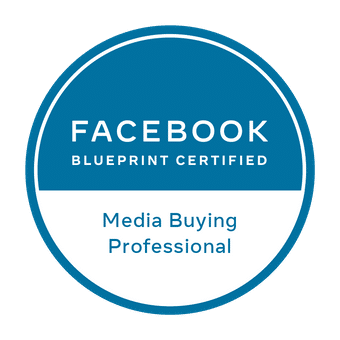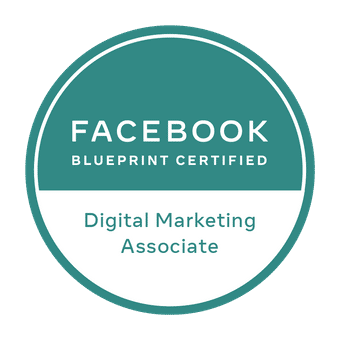
If you’re considering Google Ads to market your business, one question you might have is “How much should I spend per day?” It’s a fair and important question to answer before you begin running ads. Nobody wants to burn through their marketing budget without seeing a meaningful return on investment. The honest truth is, there’s no one-size-fits-all answer. Your ideal daily spend depends on several important factors that drive the ads algorithm, including your business goals, the geographic area you’re targeting, the search volume for your chosen keywords, the average cost per click (CPC) in your niche, your desired number of monthly leads or sales, and your overall marketing strategy.
In this article, we cover these variables in detail to help you make a more informed decision on how much should you spend on Google Ads per day.
Understanding Your Google Ads Goals – How Much Should You Spend on Google Ads Per Day?
Before we get into the numbers, it’s important to fully understand what primary goal you’re trying to achieve with your Google Ads campaign. Are you looking to simply drive traffic to your website? Maybe you’re a local service provider and you need to generate leads to feed your business? Do you have a larger company that wants to build local brand awareness? Your business’s goals will determine how aggressive you need to be with your budget as well as campaign type and strategy.
For example, a brand awareness campaign will typically incur a higher cost per click since you’re focused only on impressions and reach. Alternatively, if your goal is lead generation, you must closely monitor the cost per conversion and allocate a budget that aligns with your expected return on investment. Understanding clear business objectives will help you define your daily budget and guide how you measure Google Ads success.
Geographic Targeting Plays a Big Role
One of the often-overlooked factors in budgeting for Google Ads is your geographic target area. The cost of advertising can vary widely depending on the region you’re targeting. If you’re running ads in highly competitive urban markets like New York City or London, your CPCs will likely be significantly higher than if you’re targeting a smaller town or rural area. At the same time, the larger your target area the cheaper your clicks will be. This is due to your keywords being able to compete in more auctions across a wider area, which means you are more likely to win some auctions at a lower cost per click. Larger target areas and lower cost per click means that your budget will go further.
This variation is due to the competition level in the Google Ads auction system. In densely populated and economically competitive areas, more businesses are bidding on the same keywords, which drives prices up significantly. Therefore, if you’re targeting a large or competitive geographic area, you’ll usually need to allocate a higher daily budget to stay competitive and ensure your ads are shown consistently throughout the day. As previously mentioned, a larger geographic area when running search ads can also help you get cheaper clicks, which means more lead potential for a lower daily budget. The scenarios mentioned above depend on the kind of campaign you are running.
As a Tampa, FL based Google Ads Agency, we have a in-depth understanding of the local market, which helps us consistently drive high performance for our clients.
How Ad Schedule Can Impact Daily Budgets in Google Ads
Another important yet often underestimated factor in determining your daily Google Ads budget is your ad schedule. Running ads at different times of the day can result in different outcomes and cost per click. Some times of the day are more competitive than others. You will also see an increase or decrease in search traffic based on normal human behaviors. Not all hours of the day or days of the week are equally effective, and the timing of your ads can largely impact both performance and cost-efficiency. For example, if your business sees higher conversion rates during business hours or on weekdays, it makes sense to concentrate your budget during those peak times. If you narrow your ad schedule to when your target audience is most active or likely to convert, you can make more efficient use of a smaller budget. But, this also means that your budget may need to be higher on an hourly basis because you are compressing ad spend into fewer hours. Alternatively, if your ads are running 24/7, your budget will be spread thinner across the day and can dilute your visibility during those high-conversion periods. Understanding your market and daily human behaviors as it correlates to ad schedule with search behavior can help you optimize performance. It also plays a crucial role in determining how much you should realistically allocate per day to achieve your goals relative to your available budget.
Keyword Search Volume and Intent
Search volume is another crucial factor that will help you determine your daily ad spend. If you’re targeting keywords with high monthly search volume, there are more strategies that you can employ to maximize your budget. These keywords will get more traffic, which means there are more opportunities for your ad to generate conversions. This also means that you can get clicks for much cheaper given the larger pool of search impressions and click opportunities available.
However, volume alone isn’t the only consideration to keep in mind. Keyword intent matters just as much, if not more. High-intent keywords, which indicate that the user is close to converting into real-world revenue, are often more valuable and more expensive. For example, someone searching for “emergency plumber near me” is much more likely to convert than someone searching for “how to fix a leaky faucet.” One search implies that they need a service to handle the job for them in short order. The other is someone who is browsing for a blog post or video on how to fix something on their own. If you are paying for clicks, you do not want to get clicks from people who are seeking to do it themselves. Because of this, bidding on high-intent keywords usually costs more per click, and you should account for that in your daily budget.
Average Cost Per Click in Your Niche
when trying to answer, “How Much Should You Spend on Google Ads Per Day?”, the average cost per click in your industry will matter. Cost per click varies widely between industries due to the expense of your needs, as well as competition. Legal, insurance, finance, and medical services are some of the most expensive verticals in Google Ads. It is common often for CPCs to range from $10 to $100 or more. Legal can get up to $200+ for Personal Injury searches. On the other hand, industries like e-commerce, home décor, or local services might see CPCs closer to $1 to $5. This is due to larger search volume, margins of these industries, and competition.
Understanding the average CPC in your industry helps you gauge how much traffic your budget can realistically buy on a monthly basis. If the average CPC in your niche is $2 and your budget is $20 per day, you should expect around 10 clicks per day. Whether that’s sufficient depends on your landing page conversion rate and your business goals. If it takes 50 clicks to generate a lead, you’ll only generate one lead every five days with that budget, which may or may not be fast enough for your business needs. This would imply that you need to test landing pages to improve your conversion rate.
Conversion Rate and Lifetime Value
Beyond the click, you also need to think about what those clicks are worth for your business. Your website’s conversion rate largely determines how many of those paid visits actually turn into customers, leads, or sales. If your site converts at 5%, that means for every 100 visitors, five will convert. Now, consider your average customer lifetime value (LTV). If each customer brings you $500 in revenue over time. If you’re Avg. CPCs are $1.00 and you’re spending $100 to acquire that customer, you’re likely in good shape and profitable.
You should always try to reverse engineer these numbers to help you set an appropriate daily budget. For example, if you want five conversions a day and your conversion rate is 5%, you’ll need about 100 clicks a day. If your average CPC is $2, your daily budget should be at least $200. This kind of analysis helps to ensure your daily spend is tied directly to your performance metrics and revenue goals.
Campaign Type and Bidding Strategy
Your campaign type i.e., Search, Display, Shopping, or YouTube, also affects how much you should spend. Search campaigns almost always have higher intent and cost more per click, but they normally lead to almost immediate conversions. Display and YouTube ads typically have a lower CPC but are better suited for brand awareness and remarketing rather than direct conversions.
Your bidding strategy has additional implications on your budget needs. If you’re using automated bidding options like Target CPA (cost per acquisition) or Maximize Conversions, Google will adjust your bids dynamically, which means your daily spend might fluctuate to some degree. It’s wise to set a daily cap, even with smart bidding, to ensure you don’t exceed your marketing limits.
Desired Number of Monthly Conversions
Your desired number of monthly conversions is another critical factor that should directly influence your daily Google Ads budget. If you have a clear target of 100 conversions per month, as mentioned previously, you can reverse-engineer your daily spend based on your average cost per conversion.
For example, if your current campaigns yield conversions at $25 each, you would need a budget of approximately $2,500 per month to hit your goal, which breaks down to roughly $83 per day. This campaign outlook makes sure that your daily budget is not random, but based on realistic performance expectations associated with your real-world business objectives. It also helps prevent underfunding campaigns that can lead to inconsistent performance and lost opportunities. Knowing how many conversions you want every month gives your budgeting strategy purpose and structure, making it easier to scale, forecast ROI, and justify spend to yourself or stakeholders.
Testing and Scaling Over Time
If you’re new to Google Ads, it’s smart to start with a modest daily budget and use that time to test ad copy, keywords, and landing pages. Usually $20-$50 isn’t a bad place to be for testing before you think about scaling. Of course, as mentioned previously, it can depend on your industry. A $50 test budget will not be sufficient for most law firms. The initial test phase is less about driving massive volume and more about gathering data for analysis. Once you understand what works, you can gradually scale your daily budget while maintaining your target cost per conversion. Gradually scaling is the safe way to do it without blowing your budget that leaves a bad taste in your mouth about Google Ads effectiveness.
The beauty of Google Ads is its flexibility. You can pause, adjust, or scale your campaign at any time based on real-time performance. But jumping in with a budget that’s too small will limit your ability to collect meaningful data. At the same time, starting with too high a budget without a clear strategy can result in wasted spend if you are not able to foot the bill.
Final Thoughts about the question, “How Much Should You Spend on Google Ads Per Day?”
At the end of the day, answering the question, ‘How much should you spend on Google Ads per day?’ depends entirely on your unique business situation. There’s no perfect number that works for everyone. Instead, base your decision on key business metrics: your goals, the competitiveness of your market, your keyword strategy, and how much you’re willing to pay to acquire a customer. Be analytical and methodical, start with a test budget, monitor performance closely, and adjust as you gather statistically significant data.
With the right approach, Google Ads is without a doubt one of the most efficient and scalable ways to grow your business online. Set a realistic budget, keep your goals in focus, and let only the data guide your spending decisions.
At Blue Farm Google Ads and SEO Management, we take on brand new and seasoned accounts that have become stale. Through our proprietary, data driven approach, we often land high value leads for our clients in the first week of launching a campaign. If you would like to learn more, please contact us to schedule a free Google Ads and SEO consultation. We’re based in Tampa, FL and are well known among our local clients for our efficiency. Check out our location and reviews on Google Maps below to learn more.







